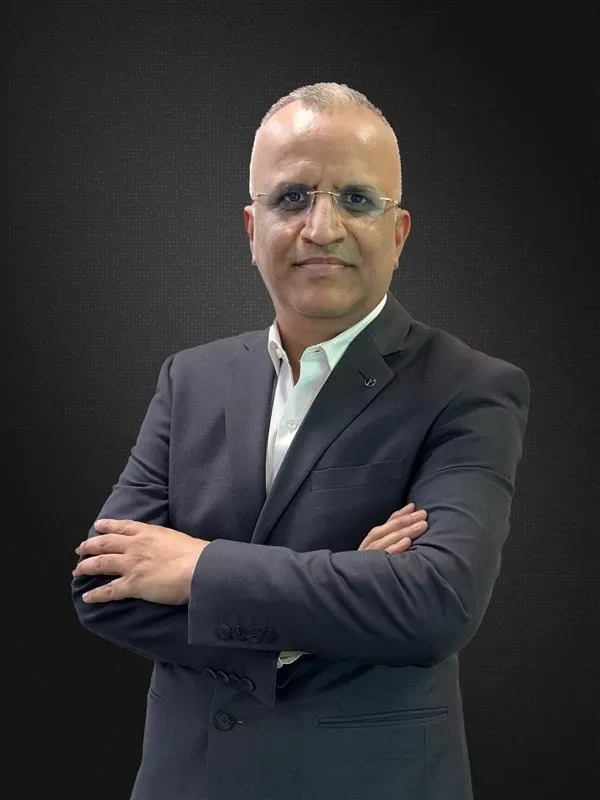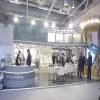CW Design Build speaks to the founder and principal of Design Chapel about her journey, challenges, design style and a lot more.
When was your founding year and what is the backstory behind starting with this venture?
I am the daughter of an Artist mother. Since childhood, I was surrounded by paints, art and creativity in general. Despite of being a rank holder academically in school, my inclination towards art and design was so profound and I thank my mother’s genes that I had decided to pursue designing long ago. A chance visit to the CEPT campus while I was in school cemented by desire to gain my Bachelor of Design Degree from the Faculty of Design school (CEPT University) which I later did. The CEPT University campus designed by B.V Doshi captivated me as a teenager and played a vital role in making me the designer I am today.
The education I received from CEPT was so holistic and experience driven that it made me fall irrevocably in love with Interior Design. A great importance was given to conceptualizing spaces while bearing in mind the wellbeing of the end user. The design principles I learnt then are still held in high regard while practicing.
Post my graduation I worked with notable architects in Ahmedabad and Pune for a period of 4 years and gained the necessary practical field experience. In 2014, I felt I was ready to take the leap and establish my own practice in Mumbai, I gave it a plunge. I always knew I wanted to create a boutique design practice where we take on projects which allowed us to design spaces that touch, move and inspire its occupants.
Tell us about the major challenges you faced while starting your journey of establishing The Design Chapel Studio.
I believe establishing any firm, studio, business or a successful practice is a game of patience and perseverance and I was ready for it. Establishing my practice in Mumbai, a city which was new and unknown to me was in itself was a challenging endeavor. For any new designer, the initial struggle is always to get clients and projects that can trust you and your brand. In the primary 2 years, our growth was slow but steady but I accepted every work that came my way, however big or small. The fear of making mistakes and failing was real and tangible but I knew that this was the path meant for me, that I was pursuing a career that I had set out to. I eventually gave me hope and pushed me to do better with each project.
While starting it out, I already knew that mistakes are a part of life and that is something I cannot escape but I made sure to never repeat them. With this, I also believed that humility with clients, honesty in business and integrity towards my design ethos would make my brand, The Design Chapel, a respectable design firm. I believe we are still young at practice but we are very hopeful and optimistic about the work we would be able to create in the future.
Tell us the story behind pulling in your first client?
What they say is true, that in time of crisis, it is the family that pulls you through. My first major project was offered to me by my extended family. The project was to design and execute 3500 sq. ft. office interiors for an NGO, Healis Institute for Public Health. They trusted me, even when I might have stumbled a bit through the process, I managed to complete the project within the given time frame and within the given budget.
This gave my morale a real boost and there I began with my journey of designing and executing a number of commercial office spaces in the following years.
What was the process of building a team and how do you choose the people you work with?
Team strength is directly proportional to the number of projects and work that a young firm has. And hence for the initial 2 years I was a one-woman army, doing everything from client meets, to site measurements, to design drawings, site meetings with contractors, material selections, accounts and billings in addition to design thinking and decisions.
I then involved 1 junior designer, then 2 and have steadily continued to add more people in the team over the years. Having said that, I do not believe in expanding beyond control, I believe in taking only those number of projects to which I can personally give time and design inputs.
My process of selecting team members is in 3 folds. Once we receive their resume and the portfolio, we ask the candidates to go through a design assignment. It is an extremely simple and fun assignment but 70% of candidates fail to send in. This immediately gives us an estimate of their sincerity and work ethics. The second step is the interview, post which there is a probation period where both the studio and the candidate can see if they are symbiotic to each other. My team consists of all young, determined and enthusiastic women and this is a conscious decision on my part to balance the skewed gender ratio in the profession. We would be glad to state that we females dictate our male dominated sites.
How would you define your style of design? How do you ensure that your projects bear your signature?
Of course, my natural instincts and likings forced me to steer towards certain design choices which in turn have developed into stylistic preferences due to which our work portfolio do bear resemblances. But it would be too early in my career to bind myself and the studio to a single signature style. We want to stay clear of a confirmative style or design language across projects. We would like the design language to be governed by context, concept and content.
Take us through your design process from conception and design to final build.
Every new project brings with itself a lot of excitement and a certain amount of nervousness in me. I am glad I still get nervous because it means that my studio and I care about doing something new and unexplored in each project we do. We constantly want to try to get better as designers along with our design aesthetics with each project.
The design process starts with narrowing down on a concept for the space with inputs from our clients. A design presentation firmly establishes the design language with the clients and we make sure we stick to it. All our following design decisions then fall under this larger umbrella. Each interior project then germinates from a very strong concept which would then unfold into spaces with their own individual characteristics.
Detailed drawings and 3D models help us to translate these ideas into tangible products with the help of our dedicated contracting teams. We work very closely with our contractors, exploring details and our vendors exploring new products and also make sure we respect our client’s timelines and budgets. We hand hold our clients till the day of the handover and make sure we exceed their expectations.
Tell us about your working style, especially in context of creative decisions and differences.
I don’t follow a single path while designing. Being passionate about the discipline from the start, I have realized over the years that any problems I may face in design are merely opportunities to hone my problem-solving skills. I believe ‘form follows function’, so on most occasions I put the client and their requirements first but sometimes if I feel too passionately about a certain idea, I push to make it happen. The key lies in trusting your creative instincts and not going against them. A designer needs to trust his/her strengths. My team members are constantly encouraged to think out of the box and we welcome design inputs from all the players in the process on our drawing board.
What changes have you perceived in your clients (in terms of demands, awareness, aesthetics, etc.)?
Homes have become sanctuaries for clients against the raging pandemic. The brief we get across the board is to make a peaceful paradise that can shelter people, nourish them and stimulate them as they spend endless hours in their homes. People are aware of the effects that a well-designed space has on their mental wellbeing.
The aesthetics and demands have altered from being luxury oriented to more warm and calming spaces. The idea that a home is more of a healing space rather than a space to show off to others has taken precedence post pandemic.
As a start-up, tell us one thing that keeps you going?
The one thing that fascinates us and keeps us going is the power that spatial experiences have on one’s everyday life. And the ability to create and curate these spaces that shape thoughts, action and behavior is truly inspiring. The Design Chapel is a young firm of qualified, committed and sensitive professionals. We want to be known for work that is thoughtfully designed and beautifully crafted. The studio operates on the philosophy that interior designing is about engaging the audience and the user in spatial story telling. Spaces should be able to communicate about the people that made them as well as those who would occupy them. They should have the freedom to evolve with time. A space which can stimulate human emotions and memories through the passage of time is in my opinion a successfully designed space.
Also Read:
https://www.constructionworld.in/latest-construction-news/real-estate-news/interiors/we-believe---good-architecture-always-lets-nature-in-/33234
https://www.constructionworld.in/latest-construction-news/real-estate-news/interiors/designing-homes-with-a-holistic-approach-purple-backyard-/33111


















